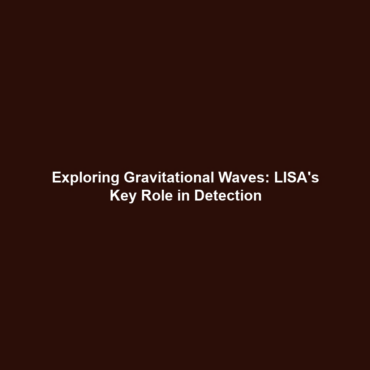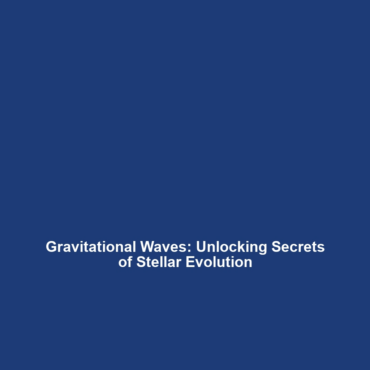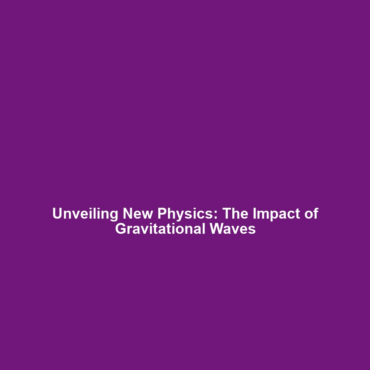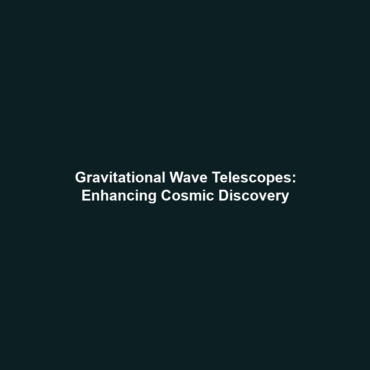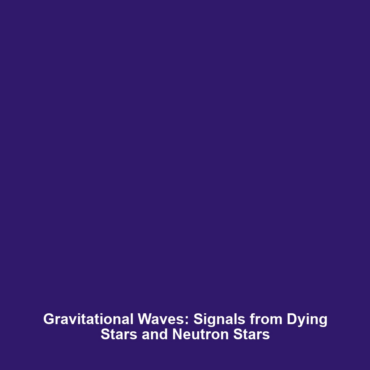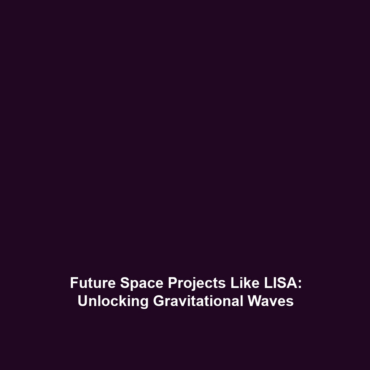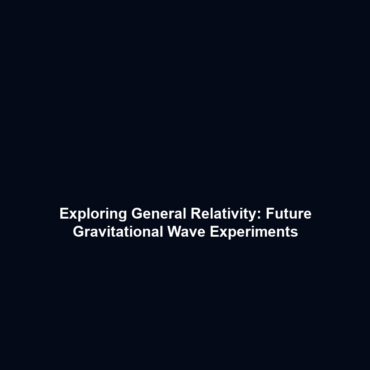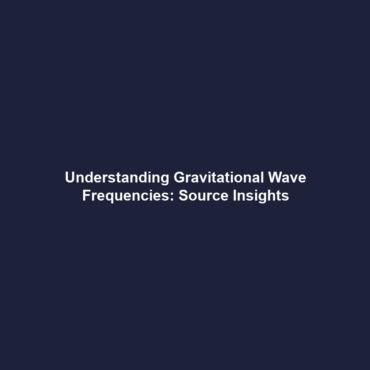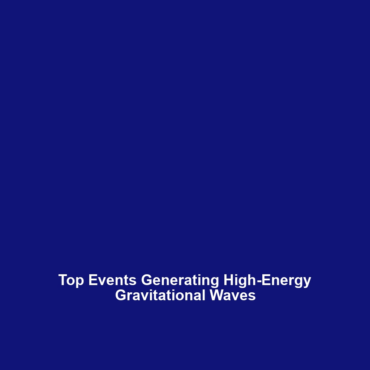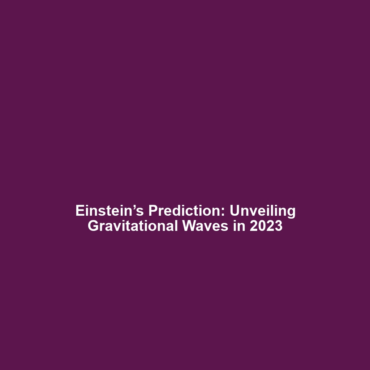Gravitational Waves in Space: The Role of Space-Based Detectors like LISA
Introduction: Gravitational waves, ripples in spacetime caused by the acceleration of massive celestial bodies, represent one of the most groundbreaking discoveries in modern astrophysics. The ability to detect these waves is crucial for understanding the universe, providing insights into cosmic events like black hole mergers and supernovae. Among the innovative solutions for detecting gravitational waves in space is the Laser Interferometer Space Antenna (LISA). This article delves into LISA’s significance within the broader context of gravitational wave research and the essential role it plays in advancing our understanding of the universe.
Key Concepts
Understanding the role of space-based detectors like LISA in studying gravitational waves involves several key concepts:
- Gravitational Waves: These waves are generated by the dynamic movement of massive objects in space, propagating at the speed of light.
- Space-Based Detectors: LISA is a proposed mission that aims to detect gravitational waves using laser interferometry, made possible through its positioning in space, which mitigates earth-based noise.
- Astrophysical Sources: Major sources of gravitational waves include binary black holes, neutron star collisions, and even the early moments of the Big Bang.
Applications and Real-World Uses
The applications of gravitational wave detection, particularly through LISA, are extensive:
- How LISA is Used in Gravitational Wave Detection: LISA aims to measure cosmic events with unprecedented precision, allowing scientists to observe phenomena such as the mergers of supermassive black holes.
- Broader Astronomy Insights: These observations can enhance our understanding of galaxy formation and the behavior of gravity under extreme conditions.
- Testing General Relativity: The data gathered from LISA can provide critical tests of Einstein’s theory of general relativity in strong gravitational fields.
Current Challenges
While the potential of LISA is remarkable, several challenges must be addressed:
- Technical limitations in achieving the required sensitivity for detecting weak gravitational signals.
- Challenges in distinguishing between astrophysical signals and noise from various sources.
- High costs and funding requirements for the development and deployment of space-based instruments.
Future Research and Innovations
Looking ahead, LISA represents an essential step forward in gravitational wave research:
- Next-Generation Technologies: Innovations in laser technology and spacecraft design are anticipated to improve detection capabilities.
- International Collaboration: Ongoing partnerships among space agencies, including NASA and ESA, will enhance resource sharing and expertise.
- Expanding Gravitational Wave Astronomy: Future research aims to create a new area of astronomy that utilizes gravitational waves alongside traditional electromagnetic observations.
Conclusion
In summary, the ongoing research into gravitational waves in space, especially with the advent of space-based detectors like LISA, is pivotal for the field of astrophysics. It not only enhances our understanding of cosmic phenomena but also challenges our fundamental comprehension of physics. As we look toward the future, continued investment and innovation in gravitational wave detection may lead to discoveries that redefine our understanding of the universe. For more on the future of astrophysics and gravitational wave research, explore our other articles here.
